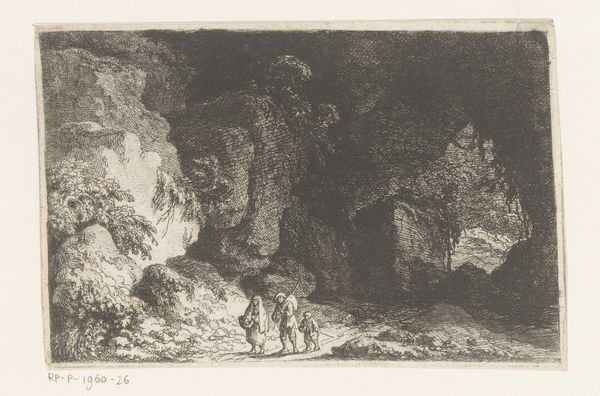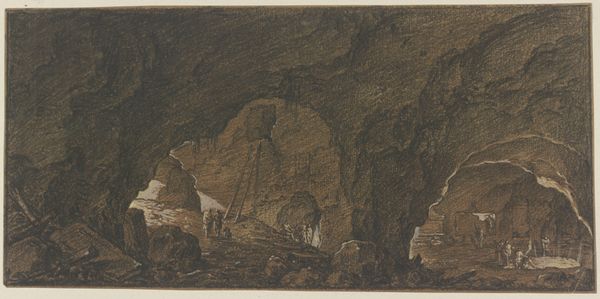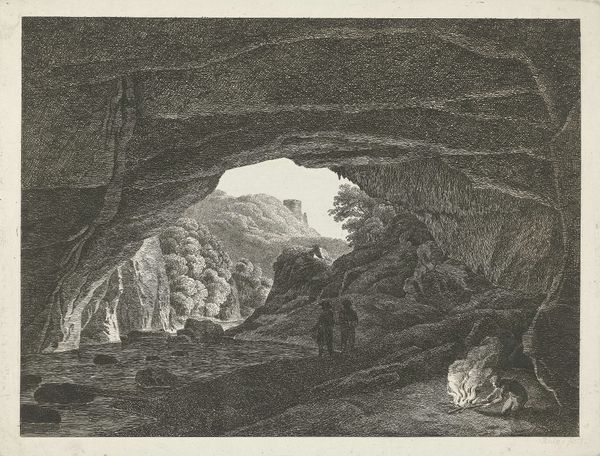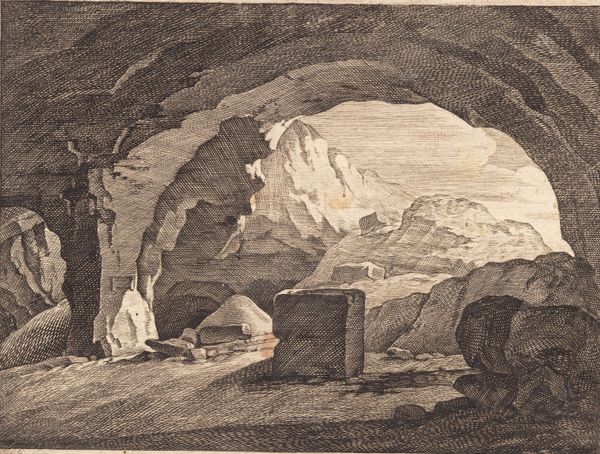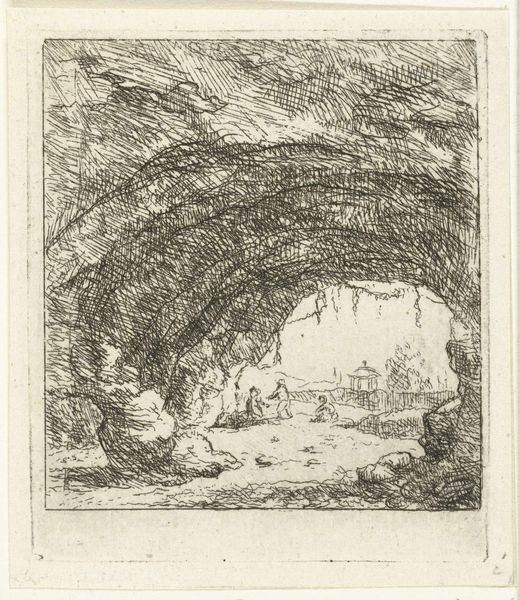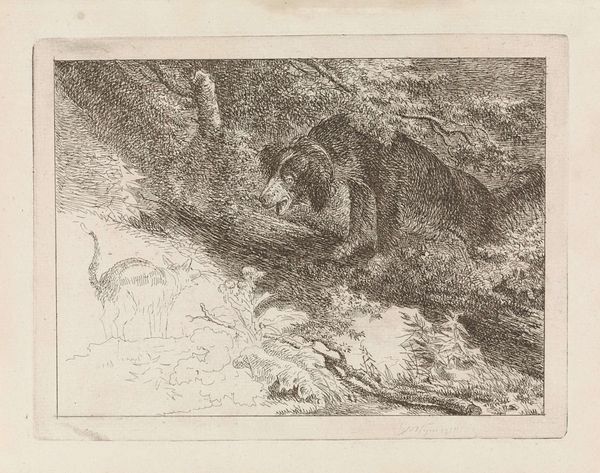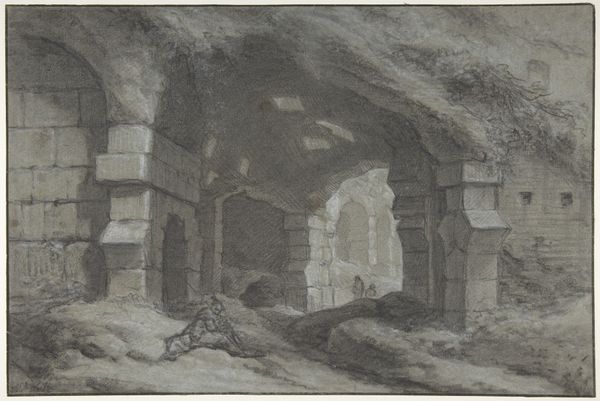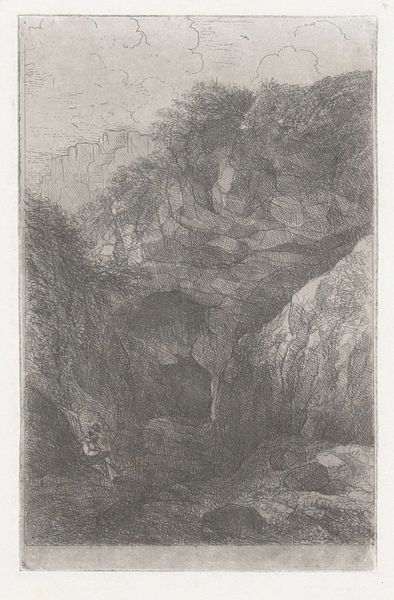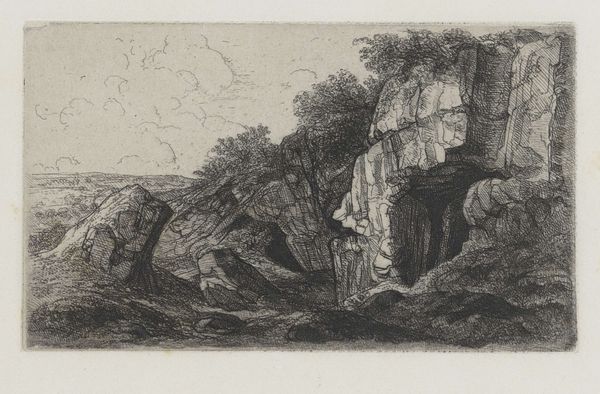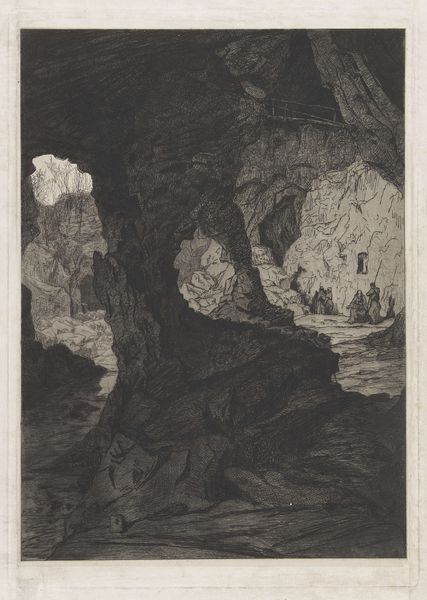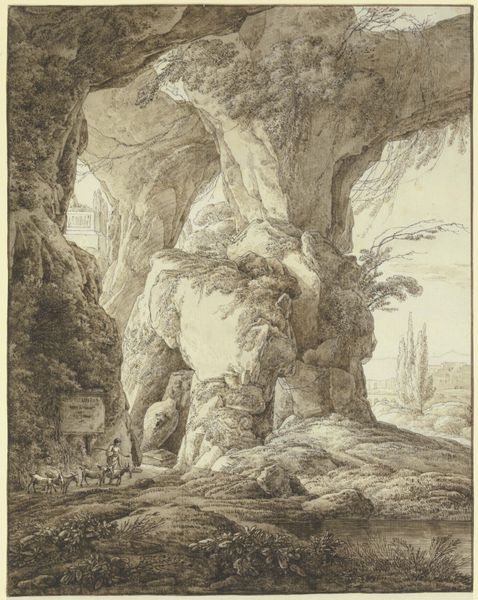
Dimensions: height 68 mm, width 123 mm
Copyright: Rijks Museum: Open Domain
Editor: This is "Resting Travelers by a Cave" created by Franz Edmund Weirotter in 1767. It's an etching. The landscape has a strong baroque aesthetic, which seems a bit at odds with the rather casual and even vulnerable poses of the travelers. How do you interpret this contrast? Curator: That tension you're picking up on is exactly where the work finds its power. Landscape art wasn't just about pretty scenery. The depiction of the natural world always carries implicit messages about culture, power, and social dynamics. These figures seem quite small and insignificant, perhaps even burdened by their journey in the face of such an imposing cave. Does that suggest anything to you about society in 1767? Editor: Maybe it suggests a human struggle against a vast and indifferent world. The cave appears both as shelter and potentially threatening, maybe signifying the role of social hierarchies or fate? Curator: Exactly. Now think about the technique: the precise, controlled lines of the etching, but contrasting with the darker areas suggesting an uncertain future. It draws our eye, almost forcing us to contemplate the figures. Could their rest be viewed not just as physical, but maybe a deeper philosophical moment? Editor: That’s an interesting thought, perhaps implying that travel prompts introspection and perhaps forces recognition of vulnerability. I also notice that the artist has used shading very cleverly. Curator: Yes. Consider also, who were the viewers of such images at the time? Wealthy patrons, no doubt. What messages were embedded within that baroque style for them? Editor: I hadn't considered that before. So, while seemingly "just" a landscape, this image probably had complex layers of social and political messaging, packaged within an idealized aesthetic for the elite. Curator: Precisely! It prompts us to consider art not as a passive reflection, but as an active participant in the social discourse of its time. Editor: This really shifts my perception; it's more than just an aesthetic scene but a statement. Curator: And statements are the core of what Activist art interpretation is all about!
Comments
No comments
Be the first to comment and join the conversation on the ultimate creative platform.
